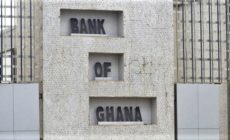The year-on-year growth was 12.4 percent in June 2017 as against 20.6 percent in June 2016.
The provision made by the banks in their books included loan losses, depreciation and others.
The non-performing loans(NPLs) however still remain high on the books of the banks with almost half of the banks recording NPLs of more than 20 percent.
According to the BoG, the key risk to the banking industry is the high stock of impaired assets to total loans as measured by the non-performing loans (NPLs) ratio. Two banks-UT Bank and Capital Bank were forcibly taken over by GCB, a move directed by BoG because of their high impairments, which the regulator described had reached alarming state.
The report added that the industry’s NPL ratio increased between June 2016 and June 2017 driven by the energy related and other large non-oil related exposures.
Also, the Asset Quality Review exercise conducted in 2016 revealed some weaknesses in banks’ credit classification practices, leading to the downgrading of some already-existing credit facilities.
The report added that the industry’s asset quality was projected to improve as banks put in place measures to strengthen credit risk management processes and improve loan recovery efforts.
The report said the issuance of the 10-year energy sector bond would help offset part of the energy sector debts, particularly debts owed by Bulk Oil Distribution Companies (BDCs) and reduce the stock of non-performing loans in the industry.
Meanwhile, overall demand for loans by enterprises picked up in the June 2017 survey round compared with the last survey conducted in April 2017.
The increase in the overall demand for loans by enterprises was on theback of net increases in demand for both long-term and short-term loans, as well as an increase in credit demand by large enterprises. Demand for loans by small and medium enterprises also increased although not by the same margin as demand for loans by large enterprises.
Similarly, the June 2017 survey responses indicated that demand for loans for house purchases went up marginally. Demand for consumer credit on the other hand, declined during the June 2017 survey round.
In a related development, the private sector remained the largest recipient of banks’ credit (both domestic and foreign) although its share of banks’ credit declined marginally from 87.4 percent in June 2016 to 86.9 percent in June 2017.
Asa result, the share of banks’ credit to the public sector increased from 12.6 percent to 13.1 percent over the same period. Credit to private enterprises which formed the largest proportion of credit to the private sector accounted for 71.2 percent of credit extension in June 2017, slightly up from 70.0 percent in June 2016.
Households accounted for 14.3 percent of total banks’ credit in June 2017, compared with a share of 14.9 percent a year before.
The Commerce & Finance, Services, and Electricity, Gas & Water sectors remained the three largest in terms of outstanding credit balances in June 2017, with a combined share of total banking sector credit of 56.3 percent.
Outstanding credit balances allocated to the Commerce & Finance sector (the largest sector)was 25.7 percent by the end of the first half of 2017.
The Mining & Quarrying and the Agriculture, Fishing &Forestry sectors were allocated the least shares of credit of 2.4 percent and 3.9 percent respectively. The share of credit to both sectors declined marginally over the one year period.











 (Selorm) |
(Selorm) |  (Nana Kwesi)
(Nana Kwesi)